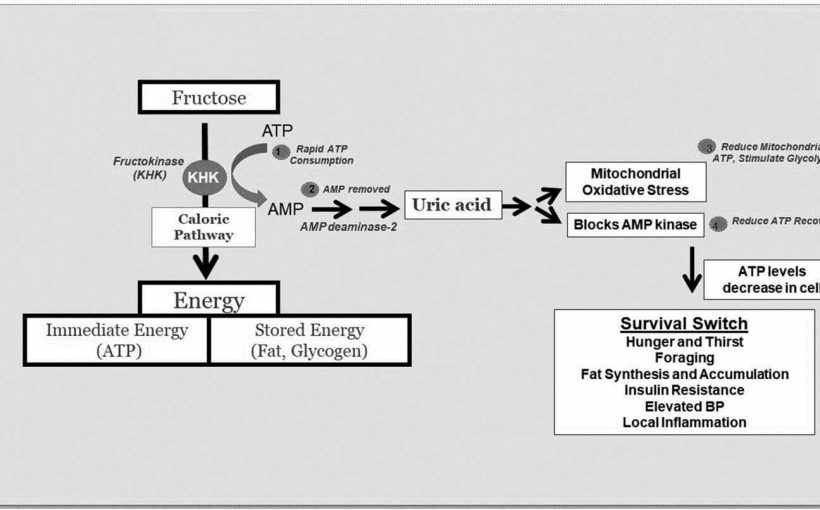
An ancient human foraging instinct, fueled by fructose production in the brain, may hold clues to the development and possible treatment of Alzheimer’s disease (AD), according to researchers at the University of Colorado Anschutz Medical Campus.
The study, published recently in The American Journal of Clinical Nutrition, offers a new way of looking at a fatal disease characterized by abnormal accumulations of proteins in the brain that slowly erode memory and cognition.
“We make the case that Alzheimer’s disease is driven by diet,” said the study’s lead author Richard Johnson, MD, professor at the University of Colorado School of Medicine specializing in renal disease and hypertension. The study co-authors include Maria Nagel, MD, research professor of neurology at the CU School of Medicine.
Johnson and his team suggest that AD is a harmful adaptation of an evolutionary survival pathway used in animals and our distant ancestors during times of scarcity.
“A basic tenet of life is to assure enough food, water and oxygen for survival,” the study said. “Much attention has focused on the acute survival responses to hypoxia and starvation. However, nature has developed a clever way to protect animals before the crisis actually occurs.”
When threatened with the possibility of starvation, early humans developed a survival response which sent them foraging for food. Yet foraging is only effective if metabolism is inhibited in various parts of the brain. Foraging requires focus, rapid assessment, impulsivity, exploratory behavior and risk taking. It is enhanced by blocking whatever gets in the way, like recent memories and attention to time. Fructose, a kind of sugar, helps damp down these centers, allowing more focus on food gathering.
In fact, the researchers found the entire foraging response was set in motion by the metabolism of fructose whether it was eaten or produced in the body. Metabolizing fructose and its byproduct, intracellular uric acid, was critical to the survival of both humans and animals.
The researchers noted that fructose reduces blood flow to the brain’s cerebral cortex involved in self-control, as well as the hippocampus and thalamus. Meanwhile, blood flow increased around the visual cortex associated with food reward. All of this stimulated the foraging response.
“We believe that initially the fructose-dependent reduction in cerebral metabolism in these regions was reversible and meant to be beneficial,” Johnson said. “But chronic and persistent reduction in cerebral metabolism driven by recurrent fructose metabolism leads to progressive brain atrophy and neuron loss with all of the features of AD.”
Johnson suspects the survival response, what he calls the “survival switch,” that helped ancient humans get through periods of scarcity, is now stuck in the “on” position in a time of relative abundance. This leads to the overeating of high fat, sugary and salty food prompting excess fructose production.
Fructose produced in the brain can lead to inflammation and ultimately Alzheimer’s disease, the study said. Animals given fructose show memory lapses, a loss in the ability to navigate a maze and inflammation of the neurons.
“A study found that if you keep laboratory rats on fructose long enough they get tau and amyloid beta proteins in the brain, the same proteins seen in Alzheimer’s disease,” Johnson said. “You can find high fructose levels in the brains of people with Alzheimer’s as well.”
Johnson suspects that the tendency of some AD patients to wander off might be a vestige of the ancient foraging response.
The study said more research is needed on the role of fructose and uric acid metabolism in AD.
“We suggest that both dietary and pharmacologic trials to reduce fructose exposure or block fructose metabolism should be performed to determine if there is potential benefit in the prevention, management or treatment of this disease,” Johnson said.
More information:
Richard J. Johnson et al, Could Alzheimer’s disease be a maladaptation of an evolutionary survival pathway mediated by intracerebral fructose and uric acid metabolism?, The American Journal of Clinical Nutrition (2023). DOI: 10.1016/j.ajcnut.2023.01.002
Journal information:
American Journal of Clinical Nutrition
Source: Read Full Article
